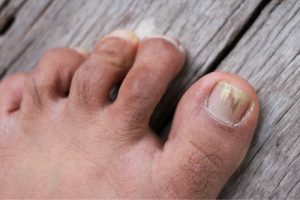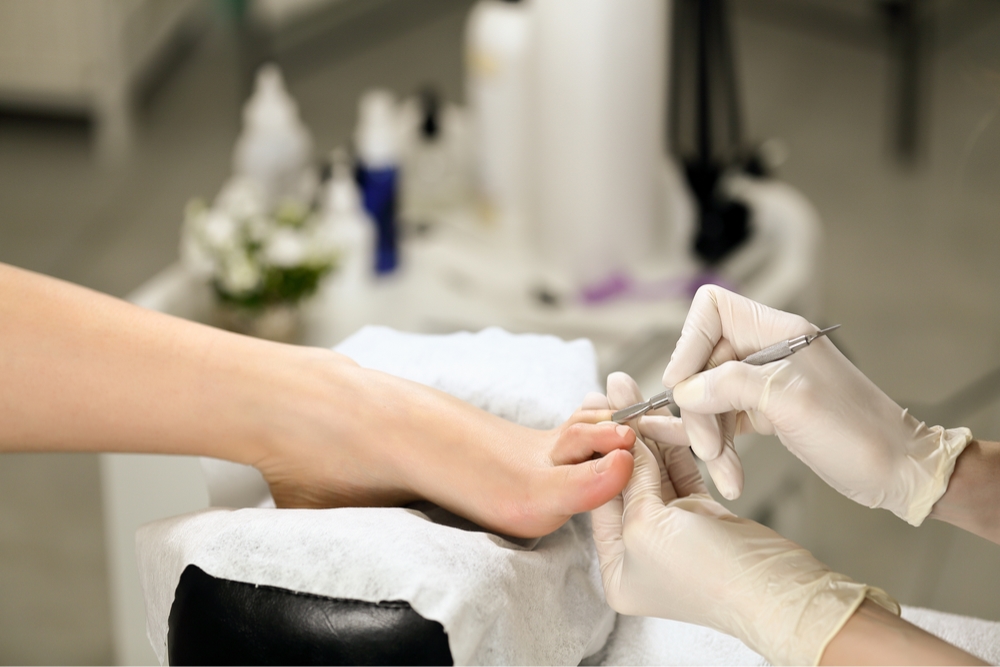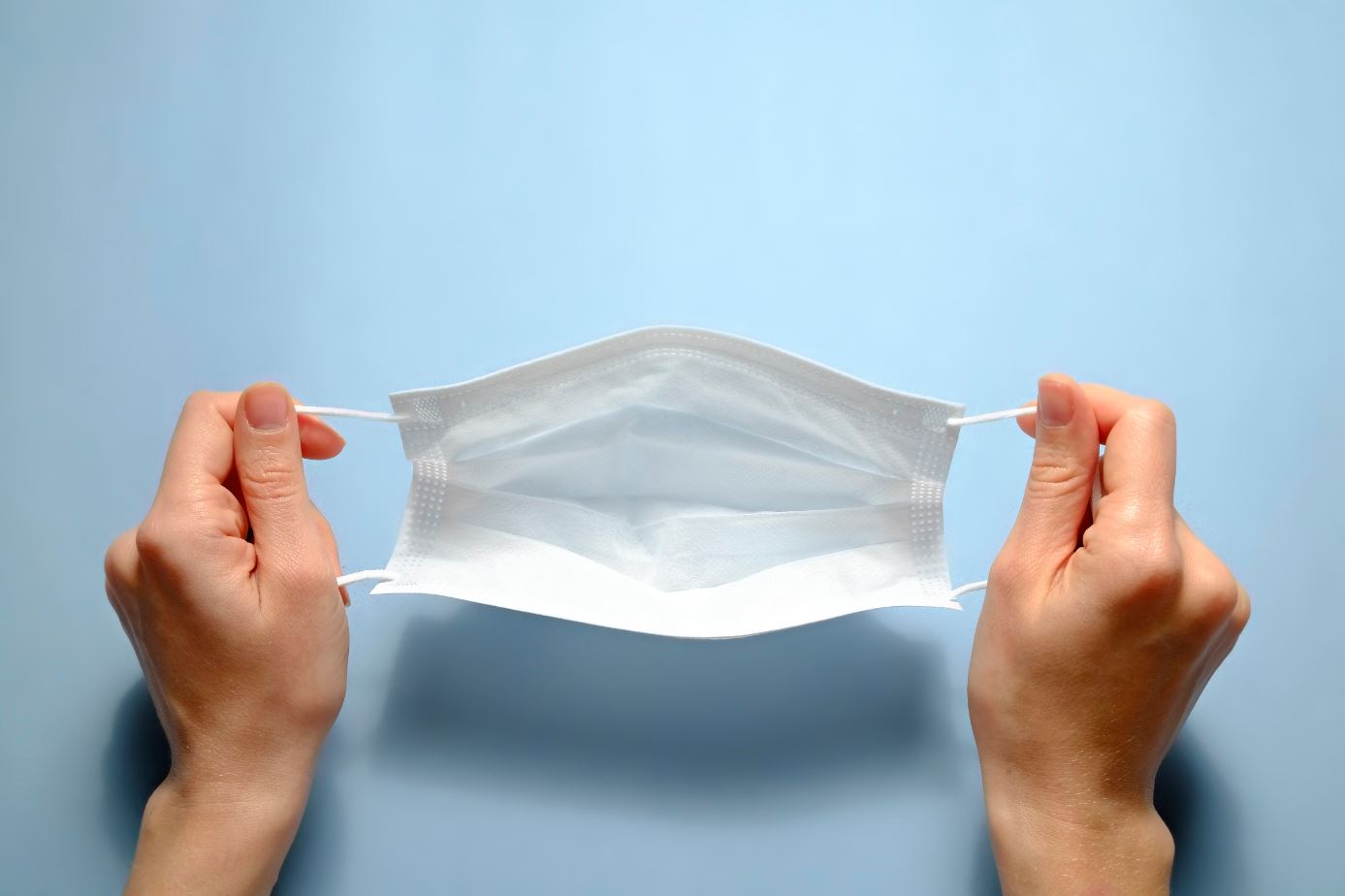Fungal toenail infection- symptoms, causes & treatment
A fungal toenail infection can be stubborn and hard to get rid of. It may cause less concern in winter, when feet can be hidden away from view. But when summer comes and it’s time for the beach, unsightly and discoloured toenails can be a bit of an issue. And sometimes they can cause pain and discomfort too. So, what is the best treatment for fungal toenail infections?
Diagnosis of a fungal toenail infection
The first thing is to make sure it actually is a fungal toenail infection, and not something else. Symptoms of fungal toenails include
- Yellow, white or brownish discolouration of the toenail (it may start as a small spot, which then spreads)
- The nail may get thick, abnormal in shape, and hard to trim
- The edges of the nail may get crumbly and breakable
- There may be an unpleasant odour
- It may spread to other nails and the skin nearby may also be infected (e.g. with athlete’s foot)
Treatment of fungal toenail infections
In many cases, infection is mild, and the person may not want to bother with treatment. Some of the treatments for a toenail infection can cause side effects, so this needs to be considered.
If treatment is desired, there are several options (none of which is guaranteed to work!)
What else could it be?
However, there are other possible causes of abnormal toenails- such as psoriasis, anaemia, and in rare cases even melanoma. Therefore, if you notice ongoing changes in the appearance of a toenail, you should speak to your doctor or podiatrist. Nail clippings can be taken, and sent away for analysis at a lab. By viewing the sample under a microscope, it’s possible to confirm if fungal elements are present or not. However, in 30% of cases there may be a false negative- sometimes several samples need to be taken to confirm a fungal toenail infection is present.
What causes fungal toenail infections?
A variety of different fungi and yeasts can cause toenail infections. Certain factors can increase your risk of getting a fungal toenail infection, including
- Old age
- Sweaty feet
- Athlete’s foot on the skin of your feet
- Walking barefoot in communal areas where there are wet floors, such as swimming pools and showers
- Injured or damaged nails (from psoriasis or overly-aggressive pedicures)
- Diabetes
- Poor circulation
- An underactive immune system
- General poor health
- Smoking
- Excessive alcohol consumption
Topical treatment of fungal toenail infections
- It’s possible to buy medicated nail varnishes or lacquers over-the-counter, which you paint on to the affected nail(s), usually once or twice a week, depending on the preparation.
- These can take a very long time to work and thus require patience and consistent use. Some studies show that using them as directed for a period of 6 months clears the infection in about 50% of cases.
- The results may be better if you soak the nails in warm water and file the entire surface of the nail with an emery board prior to applying the lacquer (this may allow the lacquer to penetrate further into the nail).
Oral treatment of fungal toenail infections
- Oral antifungal medications, which must be prescribed by a doctor
- They are usually taken for several months.
- It can take a while to see improvement in the affected nails, as you need to wait for new healthy nail to grow.
- Oral antifungal medications are often effective (between 50-80% of the time) but not in every case. Sometimes there is initial improvement, but the infection later returns.
- Side effects of these medications can include rash and inflammation of the liver, and can be serious in some people- your doctor may advise a check-up and blood tests while you are taking them.
- If the medication is working, you should see healthy nail growing from the base of the nailbed- the unhealthy part of the nail should gradually grow out. It can take up to 6 months for the affected part of the nail to grow out (toenails grow more slowly than fingernails)
Combination treatments
There is some evidence that using an oral treatment as well as a topical nail lacquer may deliver better results than either method alone.
Surgical options- removal of the toenail
Generally, this is not a useful treatment for fungal toenail infections. However, if a nail is very abnormal or is causing a lot of discomfort, it may be considered.
Laser treatment
This is a relatively new method for treating fungal toenail infections. If properly conducted it is unlikely to cause harm, but there is not yet enough evidence to say how well it works- more research is needed.
How can you prevent a fungal toenail infection?
Some simple measures may reduce the risk of getting a fungal toenail infection in the first place, or prevent it from coming back:
- Good foot hygiene- wash your feet every day, and moisturise the skin and nails after washing
- Wear breathable shoes, and in warm weather try to wear sandals or thongs.
- Trim nails carefully, straight across, smoothing any rough edges with a nail file- and disinfect clippers or scissors afterwards.
- Choose cotton socks, or sweat-absorbing socks
- Wear thongs in communal showers and pool areas
- Take care when selecting nail salons- excellent hygiene measures are essential, and treatment to your nails should not be overly aggressive.
- Avoid damaging your nails with repeated buffing, gel nails etc.
If you have concerns about the appearance of your toenails, or want advice about treatment of fungal toenail infection, speak to your doctor.
Further Patient Resources
Article Resources
Testicular Torsion- how to spot this serious condition
What is Testicular Torsion? Testicular torsion refers to the twisting of a testicle and the spermatic cord attached to it, inside the scrotum. If prolonged and untreated, the twisting rapidly affects the [...]
Psoriasis
Managing Psoriasis What is Psoriasis? Psoriasis is a chronic (long term) skin condition that causes areas of the skin to become thickened, red, and scaly (described as "plaques"). It [...]
Mastalgia- what causes breast pain?
The causes of breast pain Breast pain refers to any area or areas of tenderness, discomfort or pain in one or both breasts. It can occur for a variety [...]
Phimosis- causes and treatment of a tight foreskin
What is Phimosis? What is Phimosis? Phimosis is the medical word that describes a tight foreskin that cannot be pulled back past the head of the penis (glans). This [...]
Common cold or Coronavirus? How can you tell the difference?
Symptoms of Coronavirus or Common Cold? Unfortunately it is difficult to tell the difference between symptoms of Coronavirus and a common cold. A lab test is the only way [...]
How to get rid of hay fever
How to get rid of hay fever Hay fever is one of the most common reasons for people to attend their doctor in Spring and Summer, as pollen levels [...]











